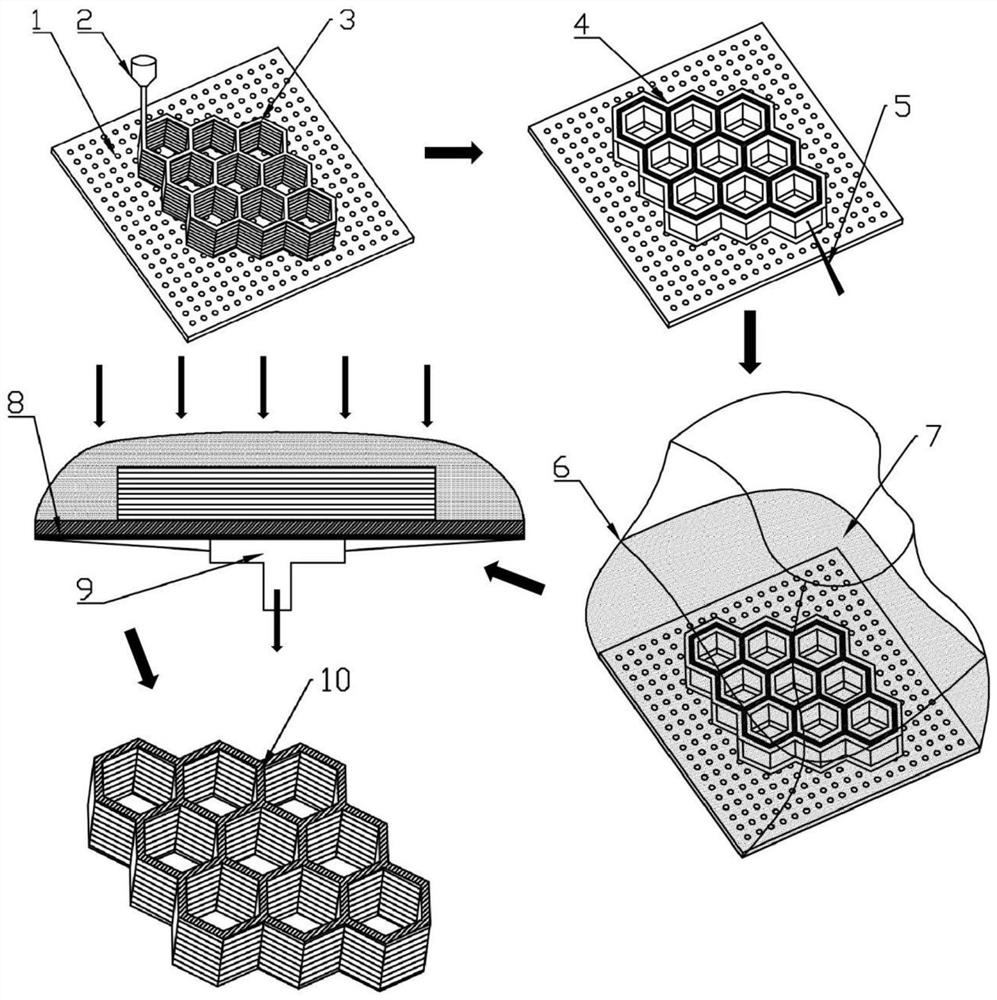Post-curing method for low-cost fiber-reinforced thermosetting composite material 3D printing component
A fiber reinforced, composite material technology, applied in the direction of additive processing, processing and manufacturing, manufacturing auxiliary devices, etc., can solve the problems of high cost, high cost, low production efficiency of silicone rubber, etc., to improve mechanical properties, increase fiber content, The effect of reducing process costs
- Summary
- Abstract
- Description
- Claims
- Application Information
AI Technical Summary
Problems solved by technology
Method used
Image
Examples
Embodiment Construction
[0030] The present invention will be further described below in conjunction with the accompanying drawings.
[0031] see figure 1 , a low-cost fiber-reinforced thermosetting composite 3D printing component post-curing method, comprising the following steps:
[0032] Step 1: On the printing platform 1 with dense small holes, based on the three-axis motion device and the fiber-reinforced composite material 3D printing head 2, the 3D printing of the fiber-reinforced composite material component 3 is carried out according to the printing path planned by the design model ; There is a semi-permeable film pasted on the printing platform 1, which can pass through gas and liquid, but not solid particles; the diameter of the small hole on the printing platform 1 should be less than 3mm, and the distance between the two holes should not be greater than 10mm and not less than 2mm ;
[0033]Step 2, using two-component liquid silicone rubber as the raw material, the two-component liquid s...
PUM
 Login to View More
Login to View More Abstract
Description
Claims
Application Information
 Login to View More
Login to View More - R&D
- Intellectual Property
- Life Sciences
- Materials
- Tech Scout
- Unparalleled Data Quality
- Higher Quality Content
- 60% Fewer Hallucinations
Browse by: Latest US Patents, China's latest patents, Technical Efficacy Thesaurus, Application Domain, Technology Topic, Popular Technical Reports.
© 2025 PatSnap. All rights reserved.Legal|Privacy policy|Modern Slavery Act Transparency Statement|Sitemap|About US| Contact US: help@patsnap.com

